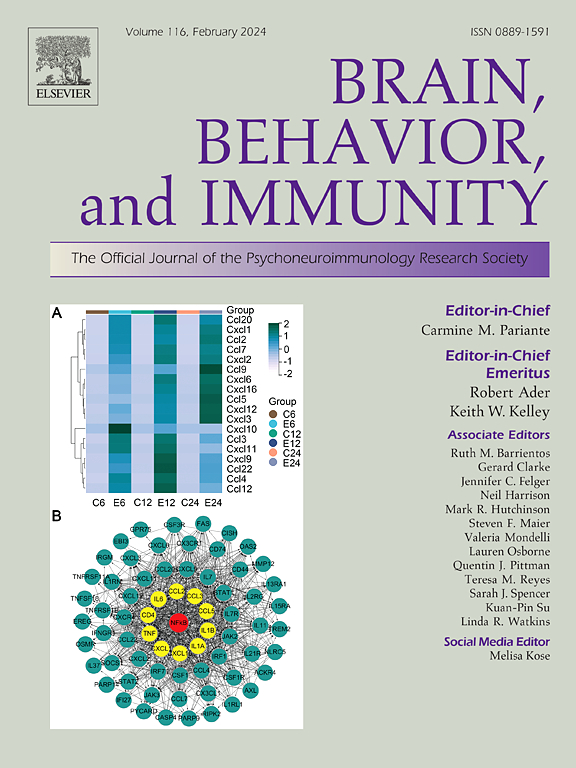From feather pecking to immunity: Immune differences between lines selected for high and low feather pecking
IF 8.8
2区 医学
Q1 IMMUNOLOGY
引用次数: 0
Abstract
Feather pecking (FP) is a serious behavioral disorder in laying hens, leading to feather damage, skin lesions, and often resulting in cannibalism. The mechanisms underlying FP are not clear yet, but recently the role of the immune system as a cause has been discussed. In humans, the interrelation between personality traits and the immune system is well-documented, with impulsivity and hyperactivity linked to distinct alterations in blood immune cell numbers and to elevated levels of pro-inflammatory cytokines. Similarly, FP in hens is associated with impulsivity and hyperactivity, suggesting a possible connection between FP and immune cell alterations. In this study numbers of leukocyte subsets in blood, spleen and cecal tonsils, along with mitogen-induced lymphocyte proliferative response and antibody concentrations across hens selectively bred for high (HFP) and low (LFP) feather pecking behavior were analyzed. Results showed that divergent selection altered FP behavior, with HFP hens showing about 10 times more pecking behavior than hens of the LFP line. HFP hens had lower numbers of T helper cells, CD4+ CD25high as well as B cells compared to LFP hens. Furthermore, HFP hens demonstrated a stronger proliferation of T cells when stimulated with ConA, while showed a weaker response in T cell-dependent B cell proliferation when stimulated with PWM, compared to LFP hens. Antibody plasma concentrations were similar between both lines. These findings highlight substantial immunological differences between HFP and LFP hens, especially in T cell immunity, and support the hypothesis that FP may be an immune-related behavioral response.
从啄羽到免疫:高啄羽系和低啄羽系之间的免疫差异。
啄羽(FP)是蛋鸡的一种严重行为紊乱,会导致羽毛损伤、皮肤损伤,并经常导致食人。啄羽症的发病机制尚不清楚,但最近有人讨论了免疫系统的作用。在人类中,个性特征与免疫系统之间的相互关系已得到充分证明,冲动和多动与血液免疫细胞数量的明显变化和促炎细胞因子水平的升高有关。同样,母鸡的FP也与冲动和多动有关,这表明FP与免疫细胞的改变之间可能存在联系。本研究分析了高啄羽行为(HFP)和低啄羽行为(LFP)选育母鸡血液、脾脏和盲肠扁桃体中白细胞亚群的数量,以及有丝分裂原诱导的淋巴细胞增殖反应和抗体浓度。结果表明,分化选择改变了啄羽行为,高啄羽系母鸡的啄羽行为是低啄羽系母鸡的约10倍。与 LFP 母鸡相比,HFP 母鸡的 T 辅助细胞、CD4+ CD25high 和 B 细胞数量较低。此外,与 LFP 系母鸡相比,HFP 系母鸡在接受 ConA 刺激时 T 细胞增殖较强,而在接受 PWM 刺激时 T 细胞依赖性 B 细胞增殖反应较弱。两个品系的抗体血浆浓度相似。这些发现突显了HFP和LFP母鸡在免疫学上的巨大差异,尤其是在T细胞免疫方面,并支持了FP可能是一种与免疫相关的行为反应的假设。
本文章由计算机程序翻译,如有差异,请以英文原文为准。
求助全文
约1分钟内获得全文
求助全文
来源期刊
CiteScore
29.60
自引率
2.00%
发文量
290
审稿时长
28 days
期刊介绍:
Established in 1987, Brain, Behavior, and Immunity proudly serves as the official journal of the Psychoneuroimmunology Research Society (PNIRS). This pioneering journal is dedicated to publishing peer-reviewed basic, experimental, and clinical studies that explore the intricate interactions among behavioral, neural, endocrine, and immune systems in both humans and animals.
As an international and interdisciplinary platform, Brain, Behavior, and Immunity focuses on original research spanning neuroscience, immunology, integrative physiology, behavioral biology, psychiatry, psychology, and clinical medicine. The journal is inclusive of research conducted at various levels, including molecular, cellular, social, and whole organism perspectives. With a commitment to efficiency, the journal facilitates online submission and review, ensuring timely publication of experimental results. Manuscripts typically undergo peer review and are returned to authors within 30 days of submission. It's worth noting that Brain, Behavior, and Immunity, published eight times a year, does not impose submission fees or page charges, fostering an open and accessible platform for scientific discourse.

 求助内容:
求助内容: 应助结果提醒方式:
应助结果提醒方式:


